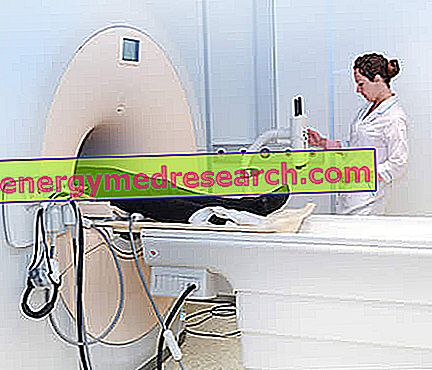Introduction
Group B hemolytic streptococcus (or SBEGB) is involved in severe systemic and focal infections in the newborn, such as meningitis and pneumonia.

The progenitor of this serum group is known as Streptococcus agalactiae, responsible for meningitis and pneumonia (above all), for bacteremia and sepsis (less frequently) in newborns and the elderly.
Group B hemolytic streptococcus was (and still is) an object of great interest, especially with regard to neonatal infections. It is in fact shown that a pregnant woman can transmit the bacterium to her child during childbirth: the risk of vertical transmission (mother-fetus) is very high.
deepening
The group B beta haemolytic streptococcus par excellence, S. agalactiae, is a diplococcus classified according to its antigenic structure. Serological cataloging, established on the basis of the capsular polysaccharide and protein antigens, suggests distinguishing group B beta hemolytic streptococci in the following protein antigens: Ia, Ib, Ia / c, II, III, IV, V, VI, VII, VIII.
While the early forms of streptococcal infections (group B) can be induced by all the serum types described above, late forms are carried in almost all cases by type III.
Neonatal infections
Although it usually populates the normal gastrointestinal flora of many subjects, group B beta haemolytic streptococcus can spread in some secondary anatomical sites. It is estimated that the bacterium behaves as a diner both in the male urethra and in the female genital mucosa (10-30% of cases): the transmission of the pathogen can take place by unprotected sexual intercourse.
As mentioned, the most serious problem is represented by the possible passage of the bacterium through the birth canal: in such circumstances, the newborn can face serious risks, such as septicemia, permanent damage and death.
The newborn is particularly susceptible to S. agalactiae infections, since the cells of his immune system are not yet fully formed and / or efficient.
Risk factors
Some important risk factors that predispose a patient to group B beta and hemolytic streptococcal infections have been identified:
- Preterm babies (<37 weeks)
- Underweight babies
- Membrane rupture for over 18 hours
- Positive urine culture for S. agalactiae
- Basal temperature alteration during labor (> 38 ° C)
- Cervicitis and vaginitis in the pregnant woman with consequent corioamnionitis (infectious process affecting the amniotic cavity)
- Previous child positive for beta-hemolytic streptococcus type B
- From recent statistical surveys, it appears that beta-hemolytic streptococcus type B is present in one third of women of childbearing age and it is believed that 1.8 children per 100, 000 births are affected by streptococcal infections.
Symptoms
In the newborn, the symptoms that distinguish group B beta and haemolytic streptococcal infections tend to begin within the first week of life (early onset) or after two to three months after birth (late onset):
- Early onset of infection: group B beta-hemolytic streptococcus spreads through the bloodstream, triggering septicemia associated with pneumonia (acute pulmonary syndrome) more frequently
- Late onset of infection: Septicemic status caused by streptococcal attack is most often accompanied by meningitis.
It should be emphasized that in both infectious forms (early and late) there is a high risk of spreading the pathogen in other anatomical sites (organs and tissues).
It is not uncommon for the newborn to complain of non-specific symptoms: this constitutes a real obstacle for the diagnostic assessment. Not surprisingly, the main problem is constituted precisely by the manifestation of vague prodromes (fever, irritability, vomiting), which can delay the diagnosis, thus postponing the beginning of a cure.
A late therapeutic intervention could cause serious permanent damage, especially neurological sequelae.
Diagnosis
The diagnosis is made based on the identification of the etiopathological agent through the culture test. The search for antigen with latex particles is possible, even if less used (also by urine culture). The most accredited and specific PCR seems to be the most accredited diagnostic test. The CAMP test is also a widely used diagnostic method for the identification of streptococci.
Therapy
Pregnant women who test positive for group B beta hemolytic streptococcus must undergo antibiotic prophylaxis during labor, which is essential to guarantee the baby an excellent protection from infection.
Prevention
At present, there is no reliable preventive method to avoid transmission of the bacterium to the newborn. However, in the case of a positive test for group B beta hemolytic streptococcus, preventive care with antibiotics (penicillin / aminoglycoside) is recommended intravenously before delivery.



